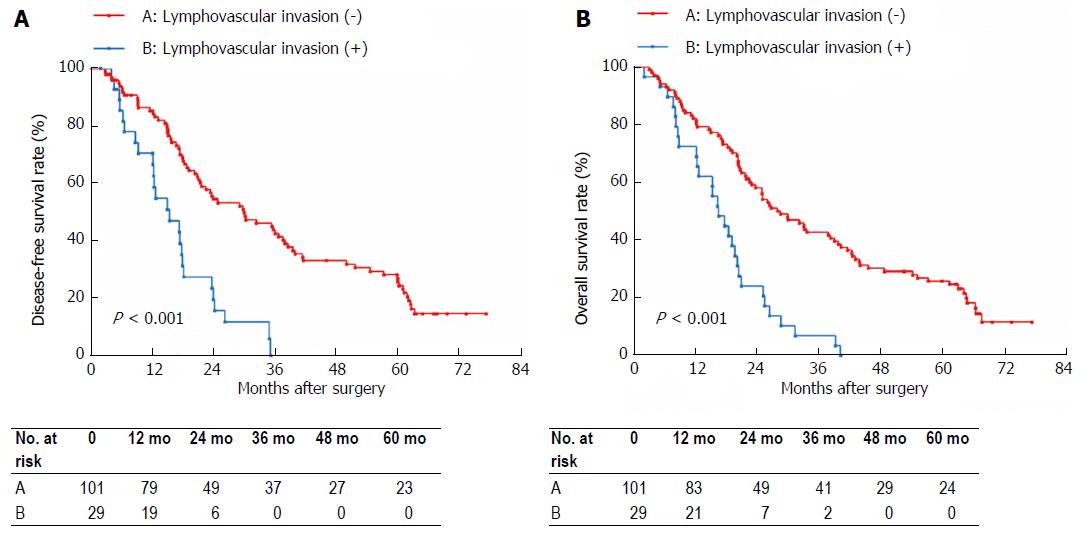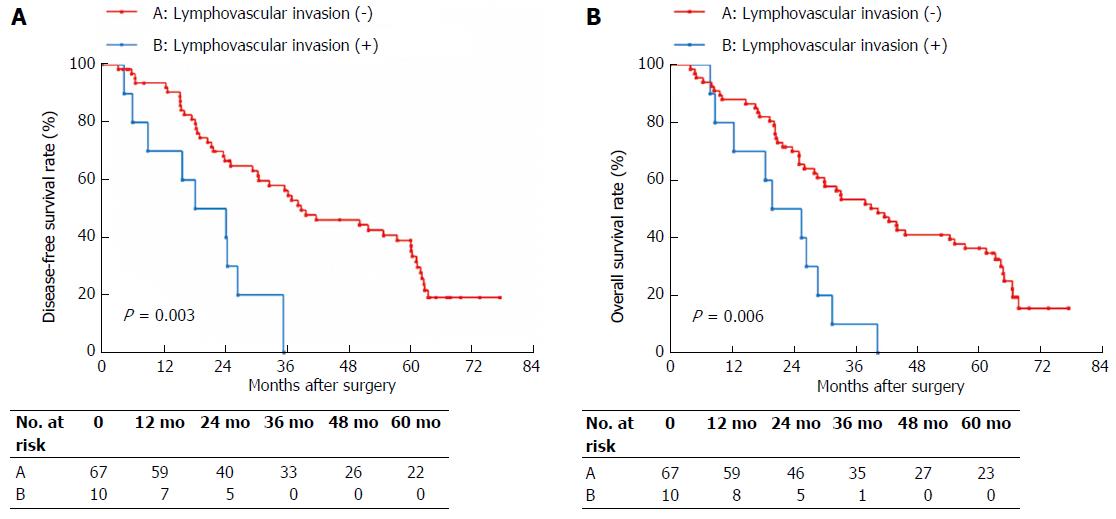Copyright
©The Author(s) 2017.
World J Gastroenterol. Sep 28, 2017; 23(36): 6685-6693
Published online Sep 28, 2017. doi: 10.3748/wjg.v23.i36.6685
Published online Sep 28, 2017. doi: 10.3748/wjg.v23.i36.6685
Figure 1 Disease-free survival and overall survival based on lymphovascular invasion in type IV hilar cholangiocarcinoma patients with radical resection.
A: The 5-yr DFS rate in the LVI negative group was significantly higher than that in the LVI positive group; B: The 5-yr OS rate in the negative group was significantly higher than that in the LVI positive group. LVI: Lymphovascular invasion; DFS: Disease-free survival; OS: Overall survival.
Figure 2 Disease-free survival and overall survival based on lymphovascular invasion in type IV hilar cholangiocarcinoma patients without lymph node metastasis.
A: The 5-yr DFS rate in the LVI negative group was significantly higher than that in the LVI positive group; B: The 5-yr OS rate in the negative group was significantly higher than that in the LVI positive group. LVI: Lymphovascular invasion; DFS: Disease-free survival; OS: Overall survival.
Figure 3 Disease-free survival and overall survival based on lymphovascular invasion in type IV hilar cholangiocarcinoma patients with tumor size ≤ 30 mm.
A: The 5-yr DFS rate in the LVI negative group was significantly higher than that in the LVI positive group; B: The 5-yr OS rate in the negative group was significantly higher than that in the LVI positive group. LVI: Lymphovascular invasion; DFS: Disease-free survival; OS: Overall survival.
- Citation: Li B, Xiong XZ, Zhou Y, Wu SJ, You Z, Lu J, Cheng NS. Prognostic value of lymphovascular invasion in Bismuth-Corlette type IV hilar cholangiocarcinoma. World J Gastroenterol 2017; 23(36): 6685-6693
- URL: https://www.wjgnet.com/1007-9327/full/v23/i36/6685.htm
- DOI: https://dx.doi.org/10.3748/wjg.v23.i36.6685











